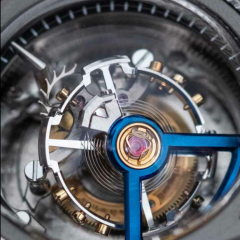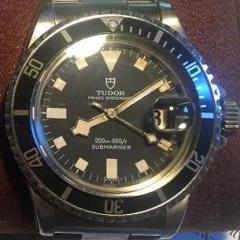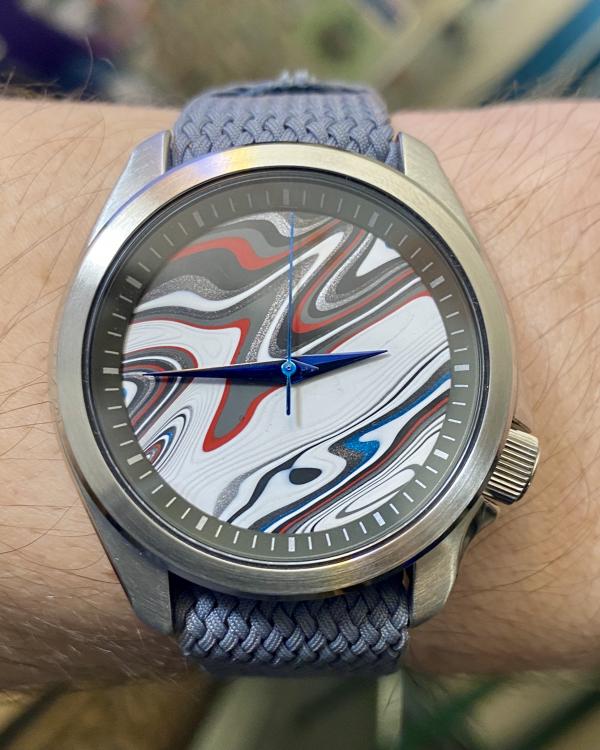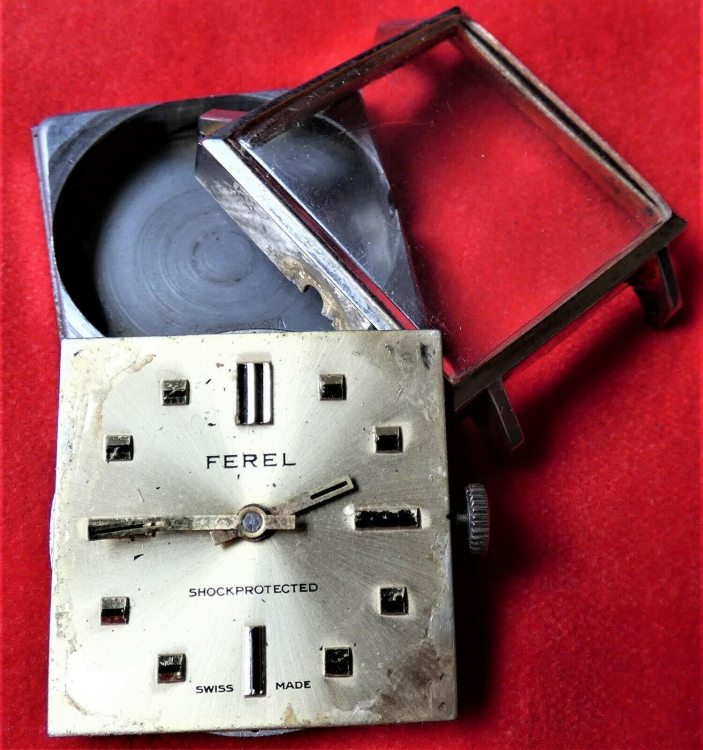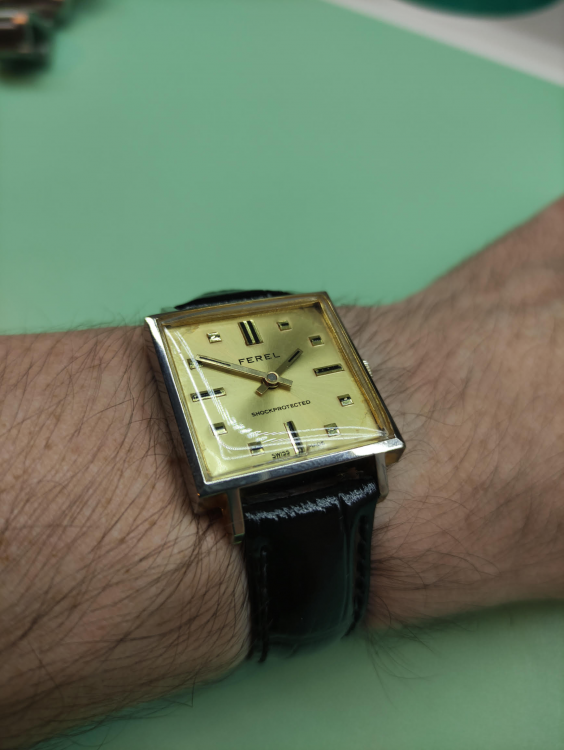Leaderboard
Popular Content
Showing content with the highest reputation on 11/06/20 in all areas
-
Hi JD dont argue with the misses she thinks logically, Are you going to train her up on the watches and lathes2 points
-
Its always nice that all screws are cleaned and polished. One thing I have noticed, its a good idea after fitting the steel pins for the ratchet wheels to bend them into an S shape this will prevent them from ever slipping out. You don't want them to give because the damage that will cause will be formidable.1 point
-
It Is a splendid clock the plate thickness and general build is real quality a treasure.1 point
-
Solved by the wisdom of my wife. She said to use a hair blower on the socket and then push it it. It worked amazingly. The manufacturer should recommend this as punching it, jumping in and and taking a sludge hammer to it did not work. Simple wife trick...that’s why we have to listen to our significant other from time to time...and I’m the Engineer:)1 point
-
I think technically the answer above to the question is not correct. Then because it's mentioned I will attach the file that does have the above information but it is not where the picture above came from. my being nitpicky is because notice the above images in color. Rolex is interesting for technical information. We have PDFs of parts lists you can go to cousins for those. there are a couple of older technical documentation's usually they can be traced back to AWCI in PDF format. Typically everything in PDF is older black and white and like the file attached not very good image quality. Then there are the physical manuals that are printed on really nice paper in color with lots of technical detail that no one has ever scanned PDFs as far as I can tell. my guess is the image above came from one of these newer color printed manuals. If you're curious about what these look like go to eBay search for Rolex technical typically it's a seller in Italy. They definitely look very nice and unfortunately they're expensive. I'm guessing as long as you're selling the original physical documents you are not violating the copyright. My understanding now is everything Rolex has is online supposedly cannot be copied and we will never see any of this because no one is going to risk the wrath of Rolex if they do anything not appropriate. ROLEX TSI HSL EDITION 1424816874_ROLEX TSIHS LEDITION.pdf1 point
-
Thanks to JOHNR725 He sent me a PDF copy It's the Rolex TSI( technical service information) So mystery solved Thank you JohnR7251 point
-
Yes and thank goodness we have them. Due to poor health I had to pack it in around the late 80's. That's why I remember it well. Parts for watches were so easy to obtain in those days. I'm glad I switched to clocks back then.1 point
-
Hi I Agree with Michael on that. Its just a knock on ball and socket fit , got to be a good fit as the elbow pressure will soon have it off.1 point
-
Hi Oldhippy that business model is still in practice today aka SWATCH and others. Its that modus operandi that is the decline of the independant watch repairer, regarding the newer watches. The Older and Vintage watches are being repaired at cost by specialists and Hobbyists, Which is a good thing as many a good watch would have been consigned to the bin.1 point
-
Its free to sign up. I suggest you sign up and ask the person who put up that photo. Knowing Rolex it might be info only to service agents. Years ago back in the late 70's Rolex were one of the first to stop supply parts to suppliers of watch parts. You had to sell there watches in order to become an agent and then they still wanted you to send the watch back to them and charge the earth for a service.1 point
-
1 point
-
Slightly off topic, but if you have access to a laser cutter capable of cutting thin sprung steel, you might be able to make sheets of the infamous Timex click springs. I'm sure JerseyMo would love a source of those.1 point
-
Absolutely stunning, and inspiring to boot. I have encountered "Fordite" as a concept a while back, and thought the effect was remarkable. It looks like very "trippy" agate, but is relatively easier to work with than agate would be. I even toyed with the idea of producing some home made "Fordite", because I didn't realise you could actually obtain it from car manufacturers. I wonder if the local car body shops would also have a build up of this sort of material. I'll need to ask. When I read about it initially, it reminded me of my dad's work when we were kids, as it looked like something highly complex in structure that had been very thinly sliced. He was a biologist and geneticists, and in the course of his lab work he would from time to time have samples of trees and other organic material prepared for examination in an SEM or for optical microscopy. One of the tools they used for this work was a microtome. Often the samples once stained had a remarkable beauty which wasn't evident until you prepared them. Actually there were several different types of microtome at the university, ranging from saws, similar to the one you describe, down to hand microtomes, which could prepare thin slices of pretty much anything, so long as the hardness wasn't too great. Something similar to the very basic microtomes I have used is available on ebay for not much money, and I suspect it may be capable of dealing with Fordite. https://www.ebay.co.uk/itm/Hand-and-Table-Microtome-with-Planoconcave-Knife-and-Table-Clamp/284067507629?hash=item4223be2dad:g:ei8AAOSwuxJfoiH3 Typically the samples they produce are smaller than a watch dial. However they produce very thin samples. In fact you can dial the thicknes down to produce slices of the order of a 0.01mm. So thin in fact, that many normally opaque objects become translucent. There are even 3d printable microtome designs. https://www.thingiverse.com/thing:2178524 You might be able to adapt this idea to your material if it isn't too far up the hardness scale for a razor to cut. Alternatively you might look at using a plane to produce something akin to Yosegi plane shaving veneers, perhaps from stacks of fordite sticks. As I say, your work is inspiring stuff. More pictures please. EDIT: One other trick I remember was to "entomb" the sample in wax, epoxy, clear acrylic or some other medium before slicing it. This might apply here too, since you could prepare your dial medium almost like a stick of rock prior to slicing it. You could drill or punch holes for your accents, fill them with a contrasing material or a soft precious metal, or even lume and then slice.1 point
-
1 point
-
1 point
-
1 point
-
I think it matters not how big or small your work place or how clean and tidy you are as long as you enjoy what you are doing and gain a lot of pleasure from doing it. enjoy.1 point



